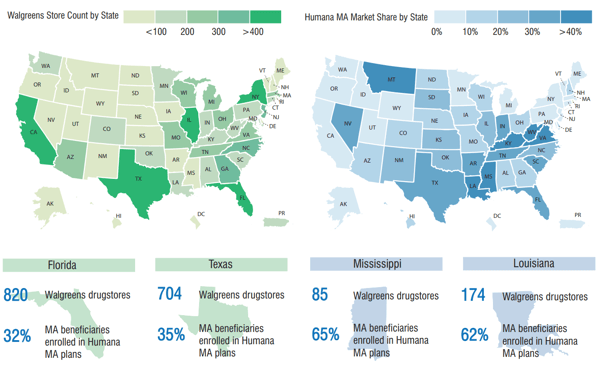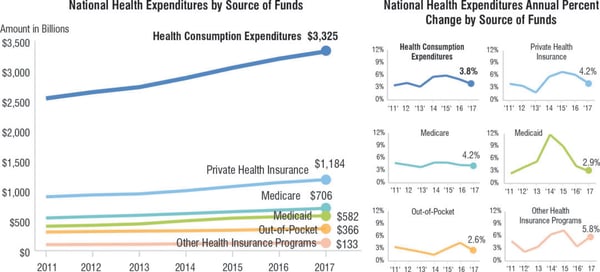InsuranceNewsNet December 27, 2018
By Rod Rishel
The youngest baby
boomers will turn 55 in 2019. Many of them are still in the planning stages of
their financial lives – seeking solutions to longevity challenges, estate
planning needs or both. Many life insurance products are designed to address
both types of challenges, but leveraging these solutions in the new year may
help boomers transfer their wealth successfully.
The need is
critical. Forty-two percent of baby boomers don’t even have an estate plan,
according to research by Caring.com. Other boomers have plans that are out of
date. Yet, Americans are continuing to live longer and many boomers will also
continue to accumulate wealth they’d like to pass to beneficiaries.
$30 Trillion Already
At Stake
Boomers are the
wealthiest generation in American history and are about to pass down those
riches – some $30 trillion – over the next few decades. However, that exchange
may not be as large as they had hoped if they don’t take the right
estate-planning steps.
For boomers with
significant assets, additional estate-planning needs can arise, and life
insurance may be able to help. Life insurance can play an important role in
providing liquidity --cash -- at death when faced with the following cash
flow drains.
Final
expenses. This category may be the most immediate liquidity need faced by
the baby boomer client. These costs, associated directly with an individual’s
death, may include end-of-life medical expenses, funeral expenses and unpaid
debts.
Probate. Next, the
process of probating and administering an estate can include expenses, such as
attorney’s fees, executor’s fees, accountant’s fees, appraiser’s fees, court
costs and other probate expenses. The larger and more complex a boomer’s
estate, the more time-intensive and costly the probate process can be.
Estate taxes. Estate taxes
may be problematic for a boomer’s beneficiaries because of how quickly the
taxes are due after death. For example, the federal estate tax is due just nine
months from the date of death and, in most cases, must be paid in cash. The
current top federal estate tax rate is 40 percent.
Additionally, a
state estate and/or inheritance tax may be due. The number of states that levy
an estate or inheritance tax is always changing, but according to the Tax
Foundation, 18 states and the District of Columbia levy an estate tax or an
inheritance tax (Maryland is the sole state with both levies) in 2018. Be sure
to tell clients to consult a tax expert about their own circumstances.
Estate equalization. Estates often
consist of assets, such as a family business or a large real estate holding,
that are difficult to divide between heirs. In such situations, there may be a
desire to keep the asset whole by passing it to one heir, while providing an equalizing
inheritance to the remaining heirs using cash and other property.
Business
succession. The surviving owners of a business may need cash to help
them buy the company from the decedent’s estate, ultimately providing the
surviving heirs with needed funds. Also, the business itself may need cash to
continue operating while new management and ownership changes are undertaken.
Charitable giving. The passing
of assets to a charity can provide benefits for both the charity and the estate
– particularly when a charitable gift helps reduce the size of the potential
estate tax bill. However, an individual’s desire not to “disinherit” their
heirs by giving away property may present an obstacle to strategies that could
benefit the charity. Additional liquidity can help provide for that
inheritance.
Why Life Insurance?
Timing. Many of the
needs described are time critical and must be addressed with cash fairly
quickly. Life insurance is different from other financial assets in that it
provides liquidity – cash - promptly after death.
Tax benefits. Generally,
life insurance death benefits are free from income tax (based on current
Internal Revenue Code). If set up in a trust designed to keep the life
insurance out of the estate, the life insurance death benefit can be free from
estate tax as well. Again, tell clients to consult a tax expert about their own
circumstances.
Helps avoid forced
liquidation costs. Some clients may point out that the estate can simply sell
some assets and use the proceeds to provide liquidity. However, there are three
potential pitfalls to this thinking that life insurance avoids:
1.
Taxes – Depending on the assets that are liquidated and used to
pay the estate tax, the sale may trigger a capital gains tax. Assets, such as
real estate or stocks, often contain sizeable capital appreciation.
2. Sales expenses –
Commissions, appraisals, fees and other expenses associated with the sale of an
asset will reduce the net liquid value of the asset to the estate.
3. The “fire sale”
discount – In order to generate cash when it is needed, some assets may need to
be sold in a hurry. This can result in a lower sale price, especially if the
market for the asset is depressed at the time of the sale.
Cost/benefit
advantages. Due to the way life insurance is constructed, the death
benefit proceeds generally may be larger than the premiums paid. Therefore, the
death benefit proceeds may help pay for estate liquidity expenses.
A Fitting Solution
Life insurance is
well-suited to provide liquidity to meet the needs of clients with large
estates, making it an important consideration in boomer estate plans. And, with
fewer years to establish a plan than Generation X or millennial clients,
unretired boomers must have the right strategies in place.
Furthermore, as
about 10,000 boomers turn age 65 each day – in addition to all those boomers
turning 55 – financial professionals have seemingly unlimited opportunities to
fulfill estate planning needs in the new year. But, where can your client
start?
An Estate-Planning
Checklist
Here are some
estate-planning measures to review with boomer clients.
·
Consult an attorney who specializes in estate planning who can
provide advice and draft estate planning documents and engage any other needed
advisors.
·
Gather information on financial condition and future financial
needs.
·
Inventory all assets, liabilities, income and expenses.
·
Determine the goals and objectives in estate planning (i.e.,
providing financial security for family, giving to charity, addressing
potential taxation issues, etc.).
·
With qualified advisors, formulate a plan designed to accomplish
the goals.
·
Ensure that the client has chosen their estate beneficiaries
and, as desired, designated specific property or interests to distribute to
each beneficiary.
·
Encourage the boomer to select guardians to be responsible for
the care and management of any minor children.
·
Have the boomer prepare for potential incapacity by naming who
will manage their property and make any needed health care decisions.
·
If the boomer is using a will, ensure that they have nominated
an executor to carry out its provisions.
·
Review how life insurance solutions, including indexed universal
life policies, may be leveraged in the estate plan to provide for favorite
charities, surviving beneficiaries or liquidity needs of the estate.
·
If using a life insurance trust, help the boomer decide which
assets will fund the trust.
·
Have a trustee named to manage the trust property and administer
the trust.
·
If business interests are a part of the estate, plan for
successor ownership and the disposition of the boomer’s interests.
·
Have the boomer consider making tax free gifts of up to $15,000
for single taxpayers or $30,000 for married couples (as indexed for 2018)
during life by using the annual exclusion.
·
Recommend that the client select a safe, accessible place, such
as a lock box or a fireproof safe, to keep all estate planning documents. Have
the client notify his or her attorneys and any other interested persons
(including the executor) of the location of those documents.
The Big Picture
Many boomers can
expect to live long lives and have wealth to share. The help you provide them
in the coming year with planning for the successful transfer of that wealth may
benefit their families and favorite charities for generations to come.
© Entire contents copyright 2018
by InsuranceNewsNet.com Inc. All rights reserved. No part of this article may
be reprinted without the expressed written consent from InsuranceNewsNet.com.
https://insurancenewsnet.com/innarticle/life-insurance-as-a-baby-boomer-estate-planning-tool#.XCacyyX4-JA


